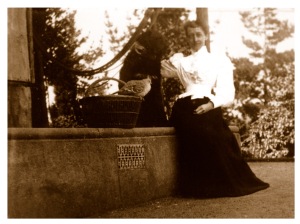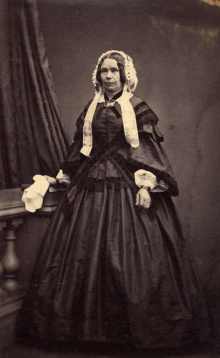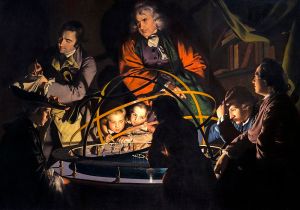To ornithologists with an archaic command of the English language, it could have been murder. It occurred one morning last week in the trees above Yallambie Park, but there wasn’t a strangled body left hanging in the branches and the Homicide Squad wasn’t called in to investigate.
 It’s an obscure bit of phraseology, but according to the Oxford Dictionary, any noisy gathering of crows is collectively known as a “murder”, and that’s just what we had circling over the Yallambie escarpment here the other day. Like a scene from an old Alfred Hitchcock horror film, dozens of these large black birds circled and swooped through the tall trees, all the while filling the air of the Plenty Valley in every direction with their strident calls.
It’s an obscure bit of phraseology, but according to the Oxford Dictionary, any noisy gathering of crows is collectively known as a “murder”, and that’s just what we had circling over the Yallambie escarpment here the other day. Like a scene from an old Alfred Hitchcock horror film, dozens of these large black birds circled and swooped through the tall trees, all the while filling the air of the Plenty Valley in every direction with their strident calls.
By the Oxford’s definition then it was a murder, and a murder of some magnitude. The aerial perambulations of these birds lasted a good ten minutes and as I stood watching them, I wondered to myself, ‘What could possibly be going on inside those bird brains rising high above the ground up there in the sky? What could they be saying to each other?’ To my mind their avian behaviour certainly seemed considered and their vocalization in many respects carried the nuances of language.



Our fruit trees have been laden this year and the cockies and lorikeets for a long time have been making deep inroads into the crop. For a while there was a bit of a stand-off between the cockatoos and the new arrivals but in this may be a clue in essence to what the crows were really chatting on about during their mid-air confab. When the crows subsequently took up an unofficial residency in the area under the outraged watch of the cockatoos, a neighbour told me that she thought, “There must be a plum tree in the neighbourhood because the birds keep dropping pips onto our tin roof.”
Go figure. Our plum tree has since been stripped quite bare. No wonder those birds had so much to say about Yallambie on arrival.
Among birds, the corvids (crows and ravens) are reputedly the most intelligent and have the largest brain for body size. They are highly social and renowned for their problem-solving abilities. You’ve probably seen them on the National Geographic Channel dropping shell fish and nuts onto hard surfaces to crack them open, or by improvising with found objects to form tools to open lunch boxes. One report even suggests that they can count to a kindergarten level, and that’s even while substituting claws for fingers as I suppose they must do.
Crows are one hell of a bird then so it surprised me to find out that calling a gathering of big black crows here in the State of Victoria a murder might actually be a misnomer.
You see, the big, black birds we see here aren’t considered by the experts to be crows at all. It turns out the birds we see in South-eastern Australia are classed by the people who know about such things as ravens, the bird Noah chose to release first up from the Ark, and it is an error of binomial nomenclature reporting to describe them otherwise.
So there you go. In the best Agatha Christie tradition, sometimes a murder isn’t necessarily what it seems, even for those of us accused of regularly murdering English here in WordPress. So maybe next time you are thinking of crying out, “Stone the crows,” perhaps what you should really be saying is, “Stone the ravens.” Doesn’t have quite the same ring, does it?
The bird we call a “crow” in South-eastern Australia is actually the “Little Raven”, a bird of smaller proportion to the larger, closely related Australian Raven and next time you’re at the football standing next to a barracking Adelaide supporter, you could try suggesting they use the more literally correct form of endearment, “Carn the Little Ravens.” Try that one day and see how far you get.
The Little Raven is just one of the many types of bird that inhabit the air up and down the Plenty Valley, permanently and on a seasonal basis. The reports of the first settlers of this area are filled with descriptions of the bird life they saw, with James Willis’ diary especially filled with lists of the species he encountered as he happily blasted away at them to send them spinning out of the sky and into his cooking pot.



Thomas Wragge and his family are also remembered for having kept a captive Sulphur Crested cockatoo in a large cage on the back verandah at Yallambie in the 19th and early 20th centuries. Cockatoos are very long lived birds and can be taught to mimic the spoken language of humans. When Thomas installed one of the very first telephones in the Heidelberg district at Yallambie, an early model Ericsson wall phone, the bird developed a talent for squawking out a call in imitation to what it had heard voiced with the ring on previous occasions. “The telephone, the telephone,” the bird would scream whenever it heard the phone alarm, which I guess was every bit as good as having an extension bell in the garden.
Later, the Tembys also kept a pet cockatoo at Yallambie but they dispensed with the cage on the verandah and parked the bird instead on a beam in the kitchen from where it could chat regularly with the family.

Be that as it may and leaving all talking birds aside, while on the subject of ornithology it is an earlier connection to the story of the Bakewell brothers of the 1840s Station Plenty, (Yallambee) that most interests me and which is worth telling from this point.

The Bakewell story carries a close and familial connection with a piece of feathered history of small but international import. According to Alexander Henderson’s pedigree in his “Early Pioneer Families of Victoria and Riverina”, John and Robert Bakewell and their sister Phoebe Howitt (née Bakewell) were 2nd cousins of Lucy Bakewell, the wife of that most famous painter of American birds, John James Audubon. The Yallambee Bakewells and Lucy shared the same ancestor – Robert Bakewell of Castle Donington, their great grandfather.
Lucy Bakewell’s family moved to the United States in 1801 when she was 14 years old and she almost certainly never met her younger Australian emigre cousins who were born after that date. However, it is said that her father William was acquainted with Joseph Priestley and that Dr Erasmus Darwin had been her infant physician and, while not a member of the Lunar Society himself, William Bakewell’s dealings with these prominent members of that famous society of liberal thinkers is evidence perhaps of the sort of circles the larger Bakewell family moved within.

In an assessment, the Pulitzer Prize winning author Richard Rhodes in his 2004 Audubon biography wrote that: “Even for English country gentry, the Bakewells were literate to an unusual degree.” It is therefore not so surprising the paths taken by the later members of that family when arriving in Australia. John and Robert’s acclimatization experiments at Yallambee and Phoebe’s patronage of the arts, together with the activities of her husband, Dr Godfrey Howitt, have all been well documented and form part of a tradition.
So in the best Quaker style then, it might be said that Lucy Bakewell was the product of something more than the usual ornamental education given to gentle women of that era and when John James Audobon met her for the first time in early 1804, he was immediately smitten. Lucy was just short of 17 years old. He was 18.
“She was tall, slim, graceful, poise, modest and lovely to look at, with a turned-up English nose and smoky gray eyes – in the recent estimate of one of her cousins, ‘a fine lively girl.’ She was also, as Audubon would discover, intelligent, loyal, well read, musical, meticulous, a good horsewoman and an athletic swimmer.” (Richard Rhodes, John James Audubon – The Making of an American, 2004).

John James Audubon was born in 1785 in the French colony of Saint-Domingue (Haiti) and raised in France during the dangerous and chaotic period after the French Revolution. In 1803 he was sent to America by his father, ostensibly to oversee his business interests there, but primarily to escape conscription into the French armies of Napolean. On Arrival in New York City, Audubon learned English in a boarding house run by Quaker women and as a result used the Quaker form of “thee” and “thou” in common speech and in his writings ever afterward. Although otherwise then an archaic form of expression, one wonders whether such Quakerisms added to the attraction of the young man in Lucy’s eyes when they met for the first time. Lucy’s father was a Unitarian but she would perhaps have remembered with childish nostalgia the Quaker connections present in the wider Bakewell family that had been left behind in England.
 The Bakewells and Audubon occupied neighbouring estates in Pennsylvania and in the winter of 1804 when skating on the frozen waters of the Perkiomen with Lucy’s younger brother, Tom Bakewell, John James went through a hole in the ice narrowly avoiding being drowned after being drawn by the current under the surface for 30 or 40 yards before emerging through another hole further down. The resulting exposure contributed to a near fatal illness. As fever increased to delirium, Lucy had Audubon removed from his own home and brought to her family’s property. The fever took 10 days to break by which time Audubon was so weak he that he could not stand up. She nursed him back to health, his convalescence lasting throughout the Christmas of 1804, Lucy reading to him and talking with him while all the while developing an intimacy, (the sort feared by James Willis in another post).
The Bakewells and Audubon occupied neighbouring estates in Pennsylvania and in the winter of 1804 when skating on the frozen waters of the Perkiomen with Lucy’s younger brother, Tom Bakewell, John James went through a hole in the ice narrowly avoiding being drowned after being drawn by the current under the surface for 30 or 40 yards before emerging through another hole further down. The resulting exposure contributed to a near fatal illness. As fever increased to delirium, Lucy had Audubon removed from his own home and brought to her family’s property. The fever took 10 days to break by which time Audubon was so weak he that he could not stand up. She nursed him back to health, his convalescence lasting throughout the Christmas of 1804, Lucy reading to him and talking with him while all the while developing an intimacy, (the sort feared by James Willis in another post).
As the young Frenchman recovered he would probably have been keenly interested in the novel surroundings he saw in the American home of these English Bakewells. Lucy’s father William, “in the English tradition of technological entrepreneurship”, had that year brought a young mechanic and millwright from Scotland to install an experimental steam-powered threshing machine at his farm which that Christmas was ready for testing in the barn yard. It was clear that the American Bakewell property was demonstrably at the cutting edge of agricultural science, even at the start of the 19th century.
An understanding was soon blooming between the young couple.
“They walked their adjoining woods and went riding. They exchanged childhoods, hers in Derbyshire, his along the Loire. They discovered their common love of country life and distaste for cities. The one reserved but steadfast, the other flamboyant and bold, both gifted at friendship, they began to fall in love.” (ibid)
The marriage of Lucy Bakewell and John James Audubon three years later was a love match but in many ways it was Lucy who was the rock upon which the great painter subsequently founded his talents and prodigious ambition. Theirs’ was a marriage of true minds but maybe it was also a reflection of some of the best Quaker ideals, a legacy from her Bakewell origins which encouraged the educated feminine mind. The marriage has been called the most important event in Audubon’s life because it was his wife who was “the spur to his ambition and the balance wheel to his character.” It was Lucy who raised their children and kept their home, even working as a governess and opening schools to provide an income while Audubon’s career took him for months at a time into the wilderness, for years overseas to find a publisher of his drawings, and into financial hardships that at one point involved bankruptcy.


John James crossed the Appalachians to Kentucky to start a new life with Lucy and it was in the frontier wilderness of North America that he truly began to fully revel in the natural world he saw all around him. Largely self-taught as an artist, Audubon developed his own methods for drawing birds from collected specimens, combining these with extensive field observations. He often portrayed birds as if caught in motion, especially feeding or hunting. The resulting work, “The Birds of America”, was a monumental task by any stretch of the imagination. In it Audubon documented all the birds of North America, painting the subjects in naturalistic poses in a style quite uncommon for their day and publishing the end result at life size in giant “double elephant” sized folios. At the height of one long separation Lucy wrote of her husband, “If I were jealous, I would have a bitter time of it, for every bird is my rival.” John James’ project at times was to border on an obsession.

The Birds of America was sold by subscription and took years to complete but it made John James famous both nationally and internationally.” The 435 plates each more than a half square metre in area and printed by Havells of London, depict some 1,065 different species, the majority drawn from specimens that Audubon himself had captured. He discovered 25 new species and 12 new sub species during the process. Some of the birds he drew are today extinct and this to the modern mind adds a certain poignancy to his legacy.

Compare the stiff poses of that other famed painter, the painter of Australian birds, John Gould from a similar but slightly later era with those of Audubon to appreciate the natural genius of the painter of America’s birds. Pelicans wading the shallows of interior rivers, flocks of songbirds soaring in the air and passenger pigeons darkening the skies – Audubon observed and recorded all of them.

Lucy outlived her husband by more than two decades after his death in 1851. Sadly for those around him, Alzheimer’s disease had left the great painter’s “noble mind in ruins” before the end. From then until her death in 1874, Lucy worked with her family tirelessly to preserve her husband’s tradition and when we examine the work of John James Audubon, it is easy perhaps to ignore the lifetime of separation and sacrifice that was required by his wife to make the artist’s best endeavours a reality.
The story of John James and Lucy Audubon was an American love story. A love story between two people on another continent and in another time but it was also a love story that involved a common and enduring love of the natural world and all that goes into it. We can all identify with that, especially today in this world of ugliness and built cities. Today at Yallambie when I look up into the sky at the visiting crows that are not crows, or at the other many and varied forms of bird life that fill this part of the Plenty Valley, I sometimes think of Audubon and his American birds and of that small, familial connection here from another time and of another place.


As always, a fantastic read. Well done Ian!
Sent from my iPad
>
LikeLike
Thanks Pauline for the comment. Really appreciate it. Ian
LikeLike
Ironic that you should post about the Little Raven. I’ve spent the past week musing of the use of the term ‘Murder of crows’ and wondering if the same term can technically be applied to ravens????? I’ve never herd of a Murder of Ravens yet what else would it be called. Especially given the numbers you’ve just described.
LikeLike
Hi Dave, I’m thinking the best place to see a murder of crows would be at Kardinia Park…
LikeLike
Apologies for my murder of spelling and grammar, I typed comment on my evil hand held device and it decided to change words according to it’s superior knowledge and ability to predict my thoughts. ! Great post.
LikeLike
Ian. Really enjoyed the article, and the rest of the pages, I’ll g wrt through them sooner or later. Don’t know your next topic, but have you come across this before via the immigration museum? I didn’t read your whole blog so apols for possibly raking over old coals..
https://collections.museumvictoria.com.au/items/1116482
Hope you enjoy the link
LikeLike
Hi Steve, glad you dropped by and thanks for the link. I had seen the Rebecca Greaves’ letter previously and used a quote from it in my post about the Victorian Gold Rushes in August, 2016. A terrific primary source.
LikeLike